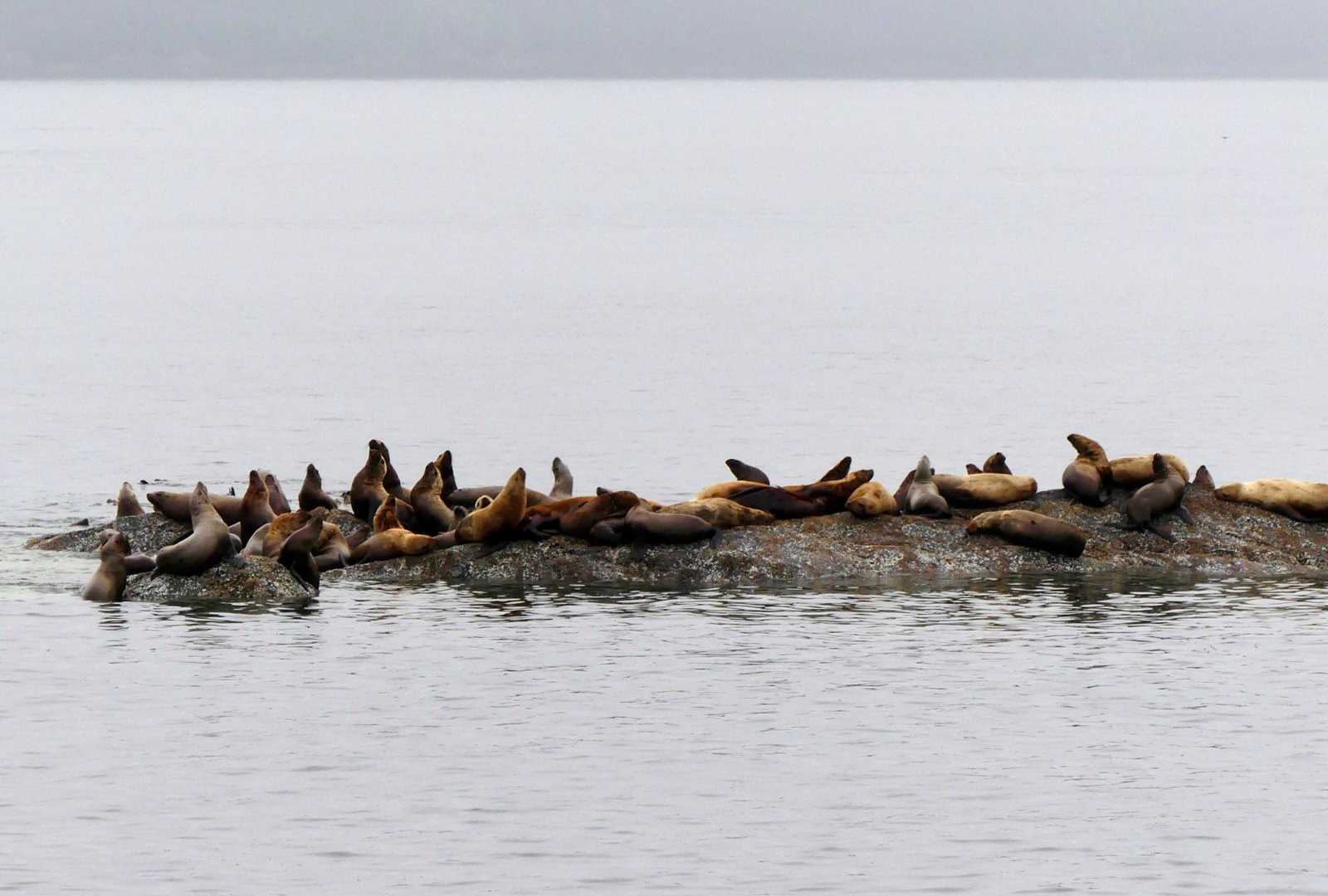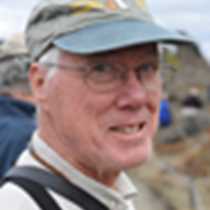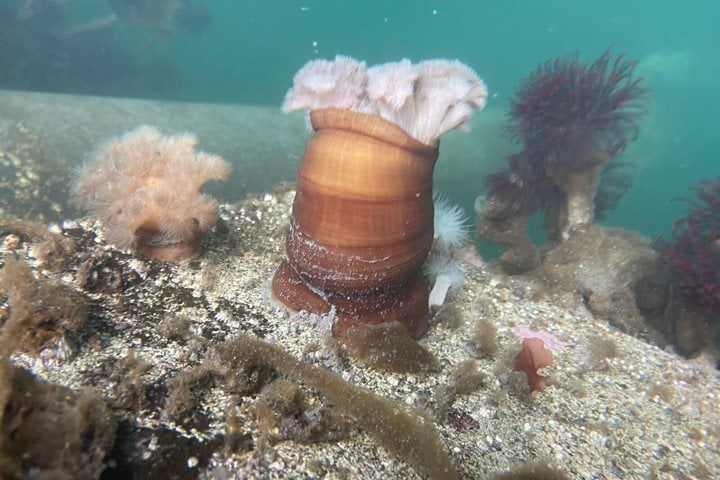We scarcely needed our expedition leader Thomas Skeele’s 7:00 AM wake-up call this morning. We left Alaska's capital city of Juneau last night, transiting south through Lynn Canal and Stephens Passage, and by morning we were off the Midway Islands. Here, there is a haul-out of Steller Sea Lions. A haul-out is a place where non-breeding animals congregate; the breeding colonies are elsewhere, on the outer coast of Alaska and Vancouver Island, British Columbia. Sea lions are surely one of the most vocal of all mammals, a talent which they kept on full display throughout the duration of our company. The crisp Alaskan morning air was full of the sounds containing elements of roars, hoarse growls, and belches, ranging from basso to tenor.
We "crossed the bar" – remnants of the terminal moraine left by the glacier that filled and carved this valley – to enter the Tracy Arm-Ford's Terror. We turned into the fjord of Endicott Arm. A fjord is a valley that was carved by a glacier and is now flooded by the sea, and this is a beautiful example. Steep rock walls rise vertically far above us and continue down some 800 feet or more below us. U-shaped hanging valleys were left behind where tributary glaciers joined the main valley glacier, and the smoothed, rounded ridge tops attested to the height of the ice at its maximum.
As we followed the fjord into the coastal mountains we saw glacial ice in increasing amounts floating down with the outgoing tide. Some of these pieces were occupied by harbor seals, hitching a free ride. Harbor seals come into the fjord to the glacier at its head to have their single pup, the better to evade the killer whales that seek a blubbery meal. Harbor seals are declining in Alaska, and we try our best to avoid disturbing them during the pupping season. One small seal, recently weaned from its mother's care at an age of only four weeks, seemed to be mistaking our boat for its missing mother and swam all around us, crying plaintively.
We boarded our Zodiacs for a close-up view of the Dawes Glacier at the very head of the fjord. This is a tide-water glacier that dumps its ice from the glacier's face. A glacier is a dynamic thing, always in downhill motion as more ice pushes down from the ice field above. In recent years, however, this glacier, like most of Alaska's glaciers, has been losing ice from the face faster than it is replaced from above, and consequently the face is retreating. We could clearly see bare rock only recently exposed the retreat of the glacier and not yet occupied by vegetation. Watching at a safe distance from our Zodiacs, we heard the rumbling of the ice in motion, where fissures of ice periodically collapse into the sea below. These were small precursor to the large calving event that we hoped to see. We were not disappointed as, with a massive roar of ice and a huge splash of upended water, hundreds of tons of ice completed its journey from the mountains to the sea.







